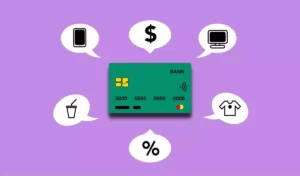Are you drowning in debt and struggling to make ends meet? Debt refinancing may be the lifesaver youve been looking for. Simply put, debt refinancing is the process of taking out a new loan to pay off existing debts. You may be wondering why debt refinancing is such an important topic. Let us explain.
First, debt refinancing can help you save money. By getting a new loan with a lower interest rate, you can reduce the amount of interest youll have to pay over time. This means more money in your pocket and less financial stress.
Second, debt refinancing can provide you with some much needed breathing room. If you are struggling to meet your monthly debt payments, refinancing can help you extend your repayment period, resulting in lower monthly payments. This can be a great relief when you feel overwhelmed by your financial obligations.
In a Nutshell
- Debt refinancing is the process of replacing an existing debt with a new loan with better terms or lower interest rates.
- The main objective of debt refinancing is to save money by reducing interest payments or extending the repayment term.
- Debt refinancing can be done for various types of debt, such as mortgages, student loans, credit card debt and business loans.
- It is essential to consider any fees or costs associated with refinancing, such as closing costs or prepayment penalties, before deciding to refinance.
- Timing is crucial when refinancing debt, as it is often beneficial when interest rates are low or if your credit score has improved.
- Debt refinancing can be a valuable strategy for individuals or businesses looking to manage their debt and improve their financial situation.
- It is important to thoroughly research and compare offers from different lenders to ensure that the new loan terms are truly advantageous.
In addition, debt refinancing can simplify your financial life. Instead of juggling multiple debt payments and due dates, you can consolidate all of your debts into a single loan. Not only does this make it easier to manage your finances, but it can also help improve your credit score by demonstrating that you are taking steps to manage your debts responsibly.
Refinancing your debt is like hitting the reset button on your finances, giving you the opportunity to regain control and create a brighter financial future.
Dave Ramsey
Simply put, debt refinancing can be a game changer when it comes to managing your financial obligations. It can save you money, provide much needed breathing room and simplify your financial life. So if youre feeling overwhelmed by debt, its time to take a closer look at the potential benefits of debt refinancing.
Understanding Debt Refinancing
Debt refinancing is a financial strategy that involves replacing existing debt obligations with a new loan with more favorable terms. This can help borrowers manage their debt more effectively and save money in the long run.
The concept of debt refinancing revolves around taking out a new loan to pay off existing debt. By doing so, borrowers can benefit from lower interest rates, extend the repayment term or change the type of loan they have when their financial circumstances change.
It is important to note that debt refinancing should not be confused with debt consolidation. Although both involve combining several loans into one payment, debt consolidation focuses on consolidating several debts into one, while debt refinancing focuses on replacing one loan with another that offers better terms.
There are several types of debt refinancing that individuals can consider. Mortgage refinancing is a popular form, where homeowners can replace their existing mortgage with a new one to benefit from lower interest rates or access equity in their home. Student loan refinancing allows borrowers to replace their existing student loans with a new loan at a potentially lower interest rate.
Credit card refinancing involves transferring debt from a high interest credit card to a lower interest loan or balance transfer card. In short, debt refinancing is a useful financial tool that can help borrowers manage their debts more effectively. Whether it’s mortgage refinancing, student loan refinancing or credit card refinancing, this strategy provides the opportunity to obtain more favorable loan terms and potentially save money in the process. By understanding the concept and types of debt refinancing available, individuals can make informed decisions to improve their financial situation.
Why Debt Refinancing Is Important
Debt refinancing can bring numerous advantages if managed prudently, making it an important financial tool to consider. One of the main benefits is the possibility of obtaining lower interest rates. By refinancing your existing debt, you can take advantage of improved credit ratings or market conditions to negotiate better terms with lenders. This can result in substantial savings over time, allowing you to allocate more funds to other financial objectives.
Another advantage of debt refinancing is the opportunity to change the length of the loan term. If you are struggling with a short term loan with high monthly payments, refinancing may allow you to extend the repayment period, reducing your monthly obligations. On the other hand, if you want to pay off your debt faster and save on long term interest, you can opt for a shorter term. Reducing monthly payments is another attractive aspect of debt refinancing.
By obtaining a new loan with more favorable terms, such as a lower interest rate or longer repayment term, you have the opportunity to significantly reduce your monthly financial burden. This can free up liquidity and provide greater flexibility in managing your personal or business budget.
While debt refinancing offers numerous advantages, it is important to be aware of the potential drawbacks. One of these is the cost. Refinancing often involves fees, such as closing costs, application fees or prepayment penalties. It is crucial to carefully evaluate these costs against the potential long term savings to ensure that refinancing makes financial sense for your situation.
In addition, there is a risk of losing ownership when refinancing secured debt, such as a home or car. If you fall behind on payments or default on the new loan, the lender could exercise its right to reclaim the collateral. It is important to be diligent in assessing your ability to meet the obligations of the new loan to mitigate this risk.
Finally, keep in mind that while refinancing debt may initially result in a lower interest rate, there is the potential for higher interest rates over the long term. Market conditions can fluctuate, and if interest rates rise significantly, the total cost of your debt may increase over the life of the loan. Monitoring interest rate trends and selecting a loan with the right terms is crucial to mitigating this risk.
In summary, debt refinancing can be a valuable tool for managing and improving your financial situation. By obtaining lower interest rates, adjusting the length of the loan and reducing monthly payments, you can save money and gain greater control over your finances. However, it is essential to carefully consider the costs involved, potential risks and long term interest rate trends to make an informed decision about debt refinancing.
Factors to Consider When Refinancing Debt
If handled carefully, debt refinancing has several benefits, making it a valuable financial tool to take into account. The potential for decreased interest rates is one of the key advantages. You can take advantage of stronger credit scores or market conditions to bargain with lenders for better terms when you refinance your current loan.
Over time, this can save a significant amount of money, freeing up more cash for other financial goals. The flexibility to adjust the loan duration is an additional benefit of debt refinancing. A refinancing could help you lower your monthly payments if you are having trouble repaying a short term loan with high monthly payments by extending the repayment time. On the other side, you can choose a shorter term if you wish to pay off your debt more quickly and avoid paying long term interest.
One more alluring feature of debt refinancing is the potential for lower monthly payments. You may greatly lessen your monthly financial load by taking out a new loan with better terms, including a longer payback period or a lower interest rate. This can increase your financial flexibility and free up cash for personal or business budget management.
Even though there are many benefits to debt refinancing, it’s vital to be aware of any potential disadvantages. The price is one of them. Fees associated with refinancing can include closing charges, application fees, and prepayment penalties. It is essential to make sure that refinancing makes financial sense for your circumstances by carefully weighing these expenses against the possible long term benefits.
In addition, when refinancing secured debt, like a house or car, there’s a chance you can lose possession. The lender may use its right to retrieve the collateral if you miss payments or default on the new loan. To reduce this danger, it’s critical to evaluate your capacity to fulfill the terms of the new loan carefully.
Lastly, bear in mind that even while refinancing debt can result in a cheaper interest rate at first, interest rates could end up rising in the long run. Market conditions are subject to change, and a major increase in interest rates could result in an increase in the overall cost of your debt over the course of the loan. To reduce this risk, keeping an eye on changes in interest rates and choosing a loan with the best conditions are essential.
To sum up, debt refinancing can be an effective strategy for controlling and enhancing your financial circumstances. You can gain more financial control and save money by negotiating lower interest rates, extending the loan period, and lowering monthly payments. To make an informed choice on debt refinancing, one must carefully weigh the associated expenses, potential dangers, and long term interest rate patterns.
Practical Use Cases of Debt Refinancing
Case Study 1: Refinancing mortgage to reduce interest rates
Homeowner’s situation prior to refinancing: Sarah, a homeowner, had purchased her home five years ago with a mortgage loan at an interest rate of 6%. However, over time, interest rates had dropped considerably, and Sarah wanted to take advantage of the lower rates to reduce her monthly mortgage payments.
Steps taken during the refinancing process: Sarah began by researching several lenders and comparing their interest rates and terms. After gathering enough information, she decided to refinance her mortgage to secure a lower interest rate. She contacted her current lender and provided them with the necessary documents and financial information to begin the refinancing process.
During the refinancing process, Sarah’s creditworthiness was re-evaluated and the new lender performed an appraisal of her property to determine its current value. Once the appraisal and credit check were completed, Sarah received a new loan offer with a lower interest rate.
Results and benefits of refinancing: By refinancing her mortgage, Sarah was able to get a loan with a reduced interest rate of 4%. As a result, her monthly mortgage payments decreased significantly, giving her more financial flexibility each month. In addition, Sarah saved money on interest payments over the life of the loan, allowing her to put those funds toward other financial goals, such as saving for retirement or paying off high interest debts.
Case Study 2: Refinancing a Student Loan to Reduce Monthly Payments
Student’s situation prior to refinancing: John, a recent college graduate, had accumulated student loan debt from multiple sources during his studies. He was having difficulty meeting his monthly loan payments due to high interest rates, making it difficult for him to effectively manage his finances.
Actions taken to refinance: To ease the burden of his student loan debt, John decided to explore the option of refinancing. He researched different lenders that offered student loan refinancing and compared their interest rates, repayment plans and additional benefits. After careful consideration, John chose a lender that offered a lower interest rate and flexible repayment options.
John then applied to refinance his student loan by submitting the necessary documentation, including proof of income, credit history and loan information. The new lender reviewed his application and approved his loan based on his financial situation and ability to repay.
Refinancing outcome and benefits: By refinancing his student loans, John was able to get a lower interest rate and extend the repayment term. As a result, his monthly loan payments decreased, making it easier for him to manage his finances and meet his other financial obligations. In addition, the new lender may have provided him with additional benefits, such as flexible repayment plans, personalized customer service, or possible interest rate discounts for meeting certain requirements.
With lower monthly payments, John was able to allocate more funds to saving, investing or paying off other high interest debts. This improved his financial stability and allowed him to move toward achieving his long term goals more efficiently.
Conclusion: Debt refinancing has proven to be a valuable strategy for individuals seeking to lower their interest rates, reduce monthly payments, and improve their overall financial situation. As seen in the case studies above, both homeowners and borrowers with student loans have successfully used debt refinancing to their advantage.
By taking the time to research and compare lenders, provide the necessary documentation, and go through the refinancing process, individuals can save significant amounts of money and achieve greater financial flexibility and stability. Debt refinancing is undoubtedly a practical and beneficial tool for managing and optimizing personal finances.
Wrap Up
We have learned about the debt refinancing’s revolutionary ability as a financial tool from this thorough examination. Debt refinancing appears as a ray of hope and a workable option for individuals trapped in the complexity of numerous debts, not just a tactic.
- Understand its mechanisms
Debt refinancing made simple: This is the deliberate replacement of current loans with new ones that have better terms, cheaper interest rates, or both.
Principal variations: Refinancing, as opposed to debt consolidation, aims to get better terms rather than just combine loans.
- Diverse advantages
Financial relief is possible since lower interest rates result in larger savings and fewer monthly payments, which lessen financial strain.
Adaptable terminology: You have the ability to adjust the duration of your loan term to fit your particular financial circumstances.
Debt management made easier: Financial commitments are made easier by combining several loans into a single, manageable loan.
- Real world implementations
Real world examples of success: Debt refinancing is clearly beneficial, as seen by the lower mortgage rates it offers to homeowners like Sarah and the relief it gives grads like John from the weight of their student debts.
- Important things to remember
Costs and risks: Particularly with secured loans, it is important to be aware of possible fees, long term interest consequences, and risks.
Consumer trends: Optimizing the advantages of refinancing requires vigilantly monitoring changes in interest rates.
- The bigger picture
A financial stability tool: Refinancing debt is a step toward long term financial stability and health, going beyond instant relief.
A financial decision making tool: With this information at your disposal, you’ll be in a better position to make choices that support your financial objectives.
Taking action now
With the knowledge and helpful suggestions we have given you, you are already equipped to handle debt refinancing with ease. Recall that creating the foundation for a more secure and prosperous financial future is just as important as relieving the strains of the present financial situation.
Concluding remarks
Refinancing your debt can be more than simply a clever financial move—it’s a chance to start over, reconsider, and create a new financial future. While contemplating this potent instrument, keep in mind that achieving financial independence is a difficult yet worthwhile journey. Debt refinancing can be a crucial step on that path if done correctly.
FAQs

Debt refinancing is the process of replacing an existing loan or debt with a new loan or debt with more favorable terms, such as a lower interest rate or longer repayment term.
There are several reasons why someone might consider refinancing their debt. It could be to lower their monthly payments, reduce the interest rate and total cost of the loan, consolidate several debts into one, or even improve their credit score.
When you refinance your debt, you apply for a new loan or credit with better terms, usually with another lender. If approved, the new loan is used to pay off your existing debt, and then you make periodic payments on the new loan according to the agreed upon terms.
Debt refinancing may not be right for everyone. It depends on several factors, such as your current financial situation, your credit score and the terms of the new loan. It is important to carefully evaluate whether refinancing will truly benefit you before proceeding.
While debt refinancing can offer certain advantages, there are also potential drawbacks to consider. These include the fees or costs associated with refinancing, the possibility of extending the repayment period, and the risk of worsening your financial situation if you are unable to make payments on the new loan. It is important to weigh the pros and cons before making a decision.
Although debt refinancing may initially cause a decline in your credit score, it can have a positive impact in the long run. By consolidating several debts or reducing interest rates, you can improve your credit utilization ratio and make timely payments, which will ultimately increase your credit score.
The specific documents required will vary by lender, but generally you will need to provide proof of income, bank statements and information about your existing debts. It is advisable to gather this documentation beforehand to expedite the application process.
In many cases, debt refinancing can save you money. By obtaining a lower interest rate, you can reduce the total amount of interest paid over the life of the loan. However, it is essential to carefully consider the fees or costs associated with refinancing to ensure that the savings outweigh the expense. Now that your questions about debt refinancing have been answered, you can make an informed decision about whether it is the right choice for you. Remember to evaluate your specific financial situation and consult with a professional before proceeding.
Article sources
At Capital Maniacs, we are committed to providing accurate and reliable information on a wide range of financial topics. In order to achieve this, we rely on the use of primary sources and corroborated secondary sources to support the content of our articles.
Primary sources, such as financial statements and government reports, provide firsthand evidence of financial events and trends. By using primary sources, we are able to directly reference information provided by the organizations and individuals involved in these events.
Secondary sources, such as financial analysis and commentary, interpret and analyze primary sources. While these sources can be useful for providing context and background information, it is important to use corroborated sources in order to ensure the accuracy and reliability of the information we present.
We take pride in properly citing all of our sources, both primary and secondary, in order to give credit to the original authors and to allow our readers to verify the information for themselves. We appreciate your trust in our website and are committed to upholding the highest standards of financial journalism.
- Investopedia – Debt Restructuring vs. Debt Refinancing
- Corporatefinanceinstitute – Debt Refinancing – Definition, Rationale, Practical Example
- Cnbc – Best Debt Refinancing Loans of November 2023
- Va.gov – Interest Rate Reduction Refinance Loan
- Federalregister.gov – Debt Refinancing in the 504 Loan Program – Federal Register
- Va.gov – Cash-Out Refinance Loan
- Imf.org – Restructuring Debt of Poorer Nations Requires More Efficient Coordination























